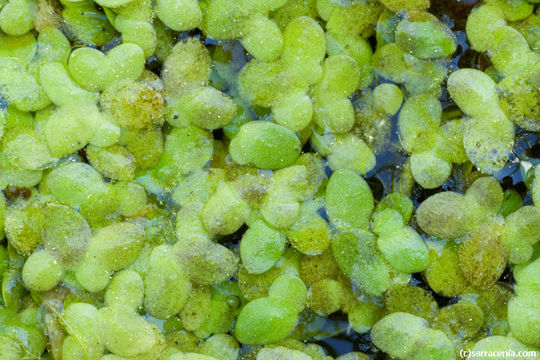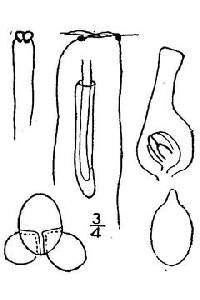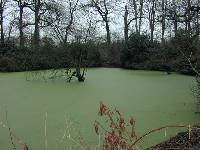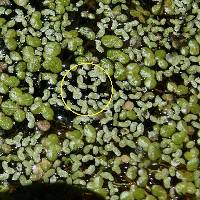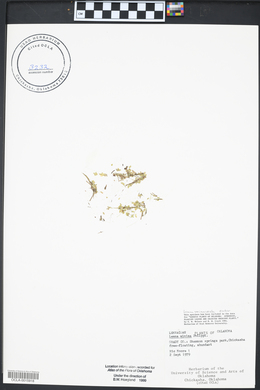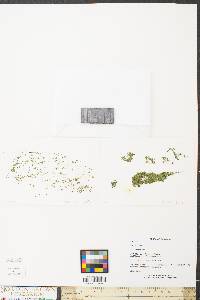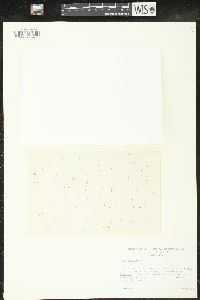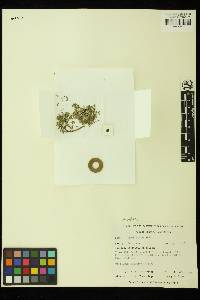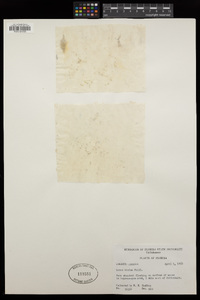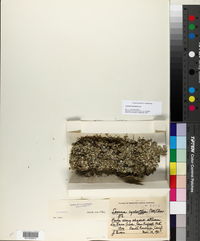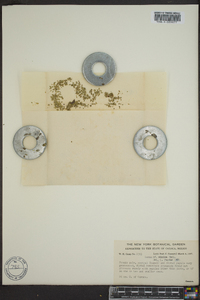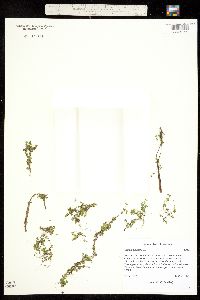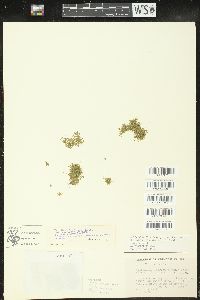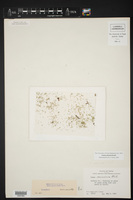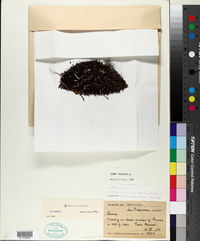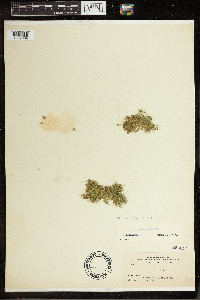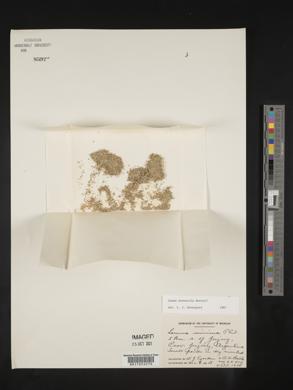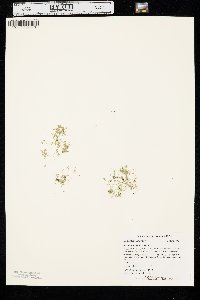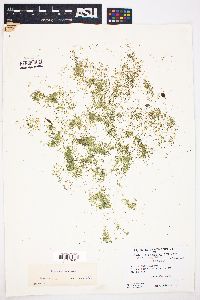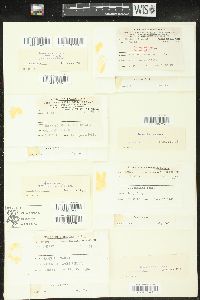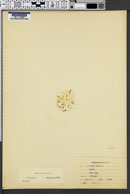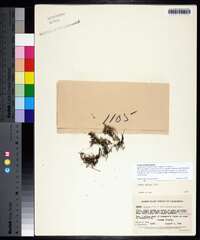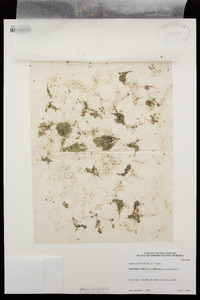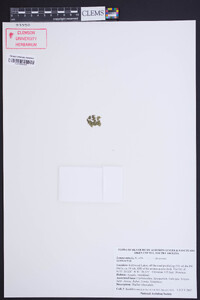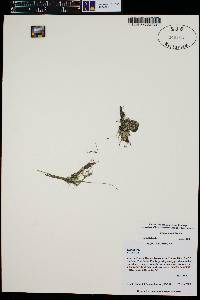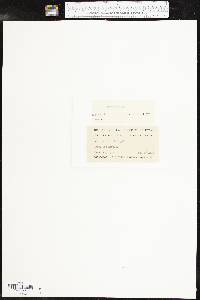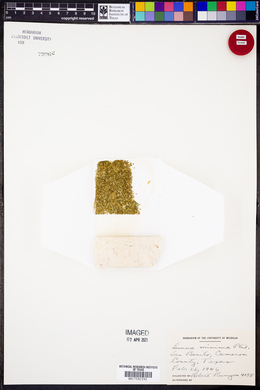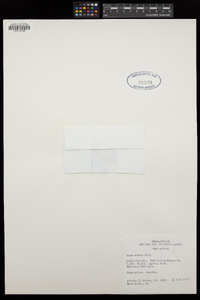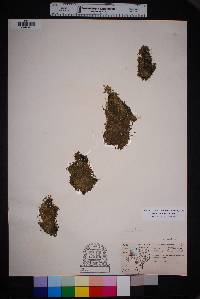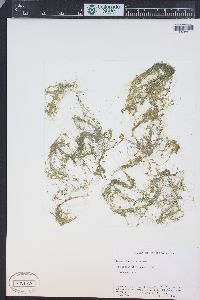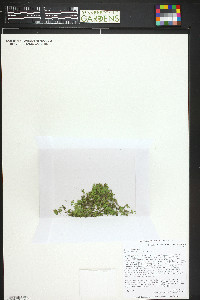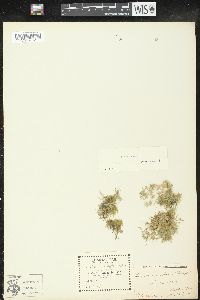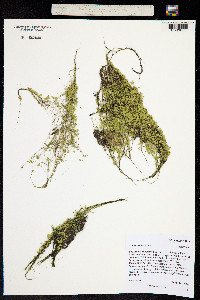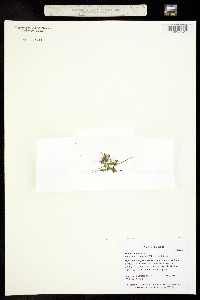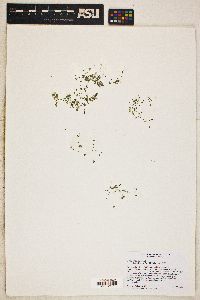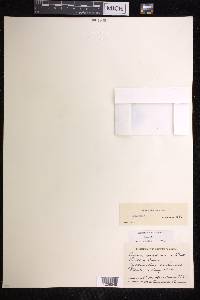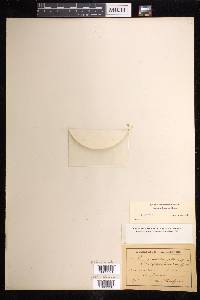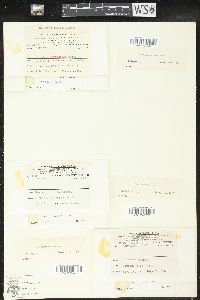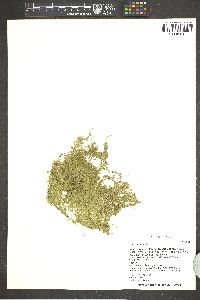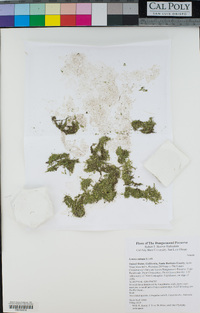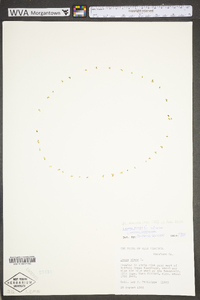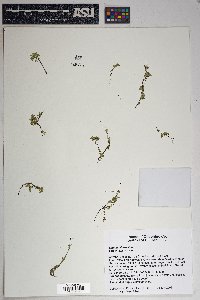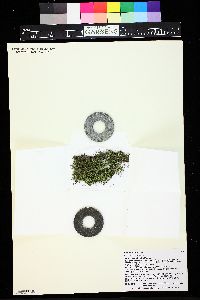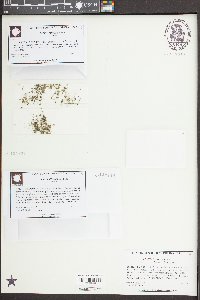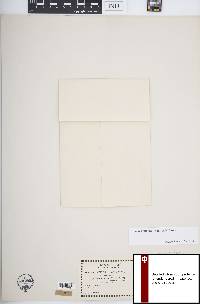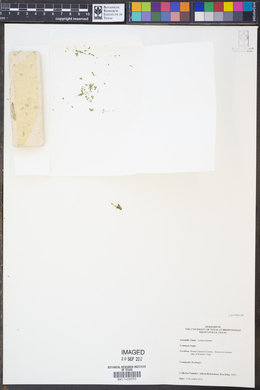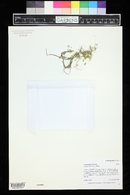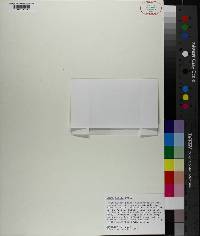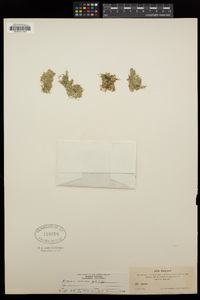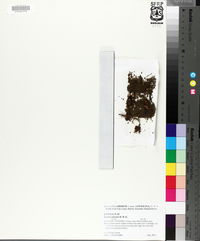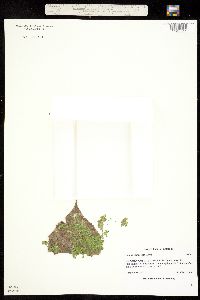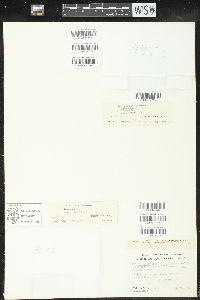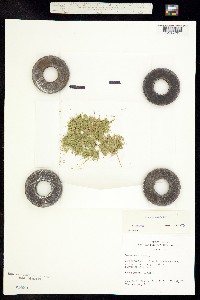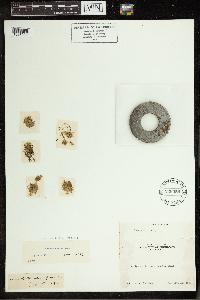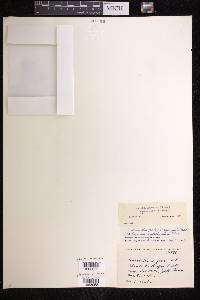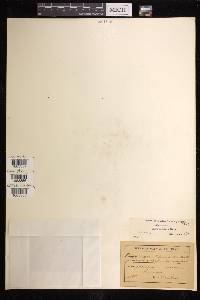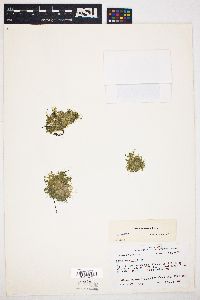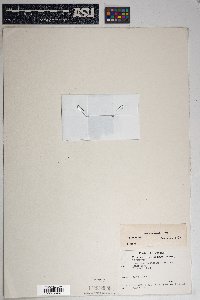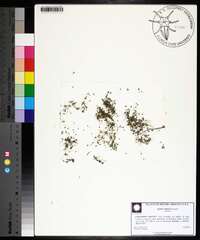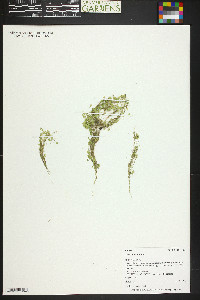
|
|
|
|
Family: Araceae
Least Duckweed, more... (es: lamita)
[Lemna minima Philippi, moreLemna minuscula Herter, Lemna valdiviana var. abbreviata Hegelm., Lemna valdiviana var. minima Hegelm.] |
Roots to 1.5 cm, tip rounded to pointed; sheath not winged. Stipes white, small, often decaying. Fronds floating, 1 or 2--few, coherent in groups, obovate, flat to thickish (but not gibbous), 0.8--4 mm, 1--2 times as long as wide, margins entire; veins 1, sometimes indistinct, very rarely longer than extension of air spaces, not longer than 2/3 of distance between node and apex; with or without small papillae along midline; anthocyanin absent; largest air spaces much shorter than 0.3 mm; turions absent. Flowers: ovaries 1-ovulate, utricular scale open on 1 side. Fruits 0.6--1 mm, not winged. Seeds with 12--15 distinct ribs. 2n = 36 (U), 40 (U), 42 (G). Flowering (very rare) late spring--early fall. Mesotrophic to eutrophic, quiet waters in temperate to subtropical regions with relatively mild winters; 0--2600 m; Ala., Ariz., Ark., Calif., Colo., Fla., Ga., Ill., Ind., Kans., Ky., La., Mich., Mo., Nebr., Nev., N.Mex., Ohio, Okla., Oreg., Tenn., Tex., Utah, Wash., W.Va., Wyo.; Mexico; West Indies; Central America; South America; introduced, Eurasia (introduced). I know of no specimens of Lemna minuta from Mississippi, but the species is to be expected there.
Plant: Small aquatic plant Leaves: FRONDS floating on the water's surface, single or 2 to a few cohering in small groups, obovate, 0.8-4.0 mm long, 1-2 times as long as wide, flat to thickish (but not gibbous), without a green stalk but with a very small white stipe that often decays; margins entire; nerve 1, sometimes indistinct, very rarely longer than the extension of the air spaces, not longer than 2/3 of the distance between the attaching point of the root and the apex; papillae small, present or not on midline; anthocyanin absent; air spaces much smaller than 0.3 mm; the sheath unwinged, the tip rounded or somewhat pointed; turions absent Flowers: rather rare, l-ovulate, the small utricular scale open on one side Fruit: 0.6-1.0 mm long, not winged. SEEDS: with 12-15 ribs Misc: Mesotrophic to slightly eutrophic, quiet waters; below 2100 m (7000 ft); May-Sep Notes: root up to 1.5 cm long REFERENCES: Landolt, Elias. 1992. Lemnaceae. Ariz.-Nev. Acad. Sci. 26(1)2. Aquatic herb Flowers: occurring very rarely, lacking sepals and petals, with two stamens, surrounded by a membraneous scale open along one side. Fruit: bladder-like (utricle), thin-walled, 0.6 - 1 mm long, with seeds having twelve to fifteen distinct ribs. Roots: to 1.5 cm long with a rounded to pointed tip. Plant body: not differentiated into stem and leaves, floating solitary to a few attached, green, 0.8 - 4 mm long, one to two times as long as wide, flattened to thickened, rounded to inversely egg-shaped or broadly elliptic, nearly symmetrical at base, single veins often distinct, sometimes having small projections along midvein. Air spaces inside the plant body are much shorter than 0.3 mm. Similar species: Lemna minuta, Lemna obscura, and Lemna valdiviana are usually less than 1.5 mm wide and are veinless, single- or three-veined. Lemna obscura has an often three-veined plant body that is purple beneath and a thin margin that tends to curl upward, while Lemna valdiviana has a single-veined plant body that is elliptic to narrow oblong with an asymmetrical base. Flowering: late spring to early fall Habitat and ecology: Quiet waters. Occurence in the Chicago region: native Etymology: Lemna is the Greek name for a water weed. Minuta means "very small." Author: The Morton Arboretum Martin and Hutchins 1980, Cronquist et al. 1977, FNA 2000 Duration: Perennial Nativity: Native Lifeform: Forb/Herb General: Perennial, free-floating aquatic herb with roots to 1.5 cm long; fronds solitary or in groups of 2 or a few, connected by small, white, often decaying stipes. Leaves: Fronds (structures that look like leaves but are developmentally both stem and leaf tissue) tiny, floating, obovate, 1-4 mm, flat to slightly convex or thickish, green and mottled, never reddish, usually with 1 indistinct vein. Flowers: Unisexual, with 2 minute reproductive pouches, each containing 1 pistillate and 2 staminate flowers. Plants rarely flowering. Fruits: Follicles to 1 mm long, not winged; seeds with 12--15 distinct ribs. Ecology: Found in slow moving water from 3,000-5,500 ft (914-1676 m), flowers June-September. Distribution: Widespread throughout N. Amer. and S. Amer. Notes: Lemna is a genus of tiny, free-floating aquatic plants, which usually form loose mats or clusters of very small (ca. 2-3 mm) -leaves- that float on the water surface, with trailing roots that are thin, transparent, and not attached to the ground. There is a long history of this taxon; see Cronquist et al. 1977 for a great encapsulation. Generally difficult to tell Lemna apart in the field but this species smaller than the other two regional species; has one (obscure) vein per plant body; leaves (fronds) to 4 mm, and short roots less than 2 cm long. Identification of species within this genus requires high magnification and technical knowledge of the group. To analyze anatomic structures (e.g., number of veins or extension of air spaces), transparent slides are necessary. Ethnobotany: Unknown Etymology: Lemna is from the Greek limnos, lake or swamp, while minuta means minute or small. Synonyms: Lemna minuscula, many others, see Tropicos Editor: SBuckley 2011, FSCoburn 2015, AHazelton 2015 Thallus flat or nearly so on both sides, thin-margined, smooth or with a few low papillae along the midline above, ovate to elliptic, symmetrical or nearly so, solitary or sometimes 2(+) together, not anthocyanic, 1-2.5 mm, mostly 3/5 to fully as wide, the single obscure nerve reaching at most 2/3 of the way from node to apex; spathe open; fr exserted, elongate, tapering to the persistent terminal style; seed solitary, elongate, evidently ribbed; 2n=36, 40. Mainly w. U.S. and temp. S. Amer., perhaps not in our range. (L. minima; L. minuscula) Gleason, Henry A. & Cronquist, Arthur J. 1991. Manual of vascular plants of northeastern United States and adjacent Canada. lxxv + 910 pp. ©The New York Botanical Garden. All rights reserved. Used by permission. From Flora of Indiana (1940) by Charles C. Deam The habitats are similar to those of the other species of the genus. It is known in Indiana only from Allen, Cass, and Sullivan Counties. The only Ohio record is from a pond in Paulding County within three or four miles of Allen County, Indiana. …… Indiana Coefficient of Conservatism: C = 3 Wetland Indicator Status: OBL |
This project was made possible in part by the Institute of Museum and Library Services [MG-70-19-0057-19].
Powered by Symbiota

